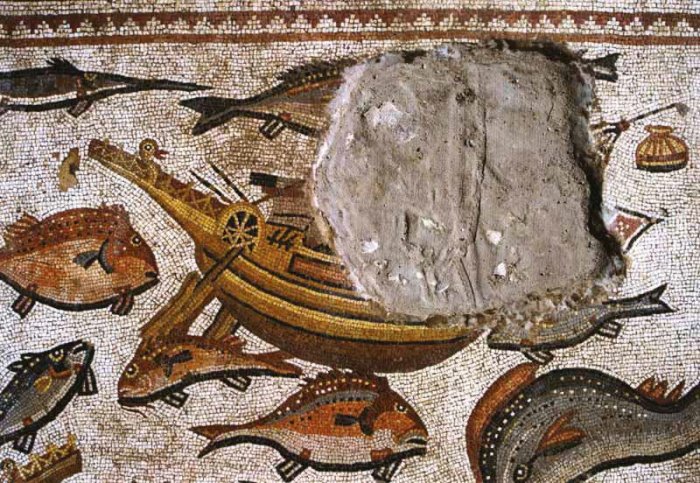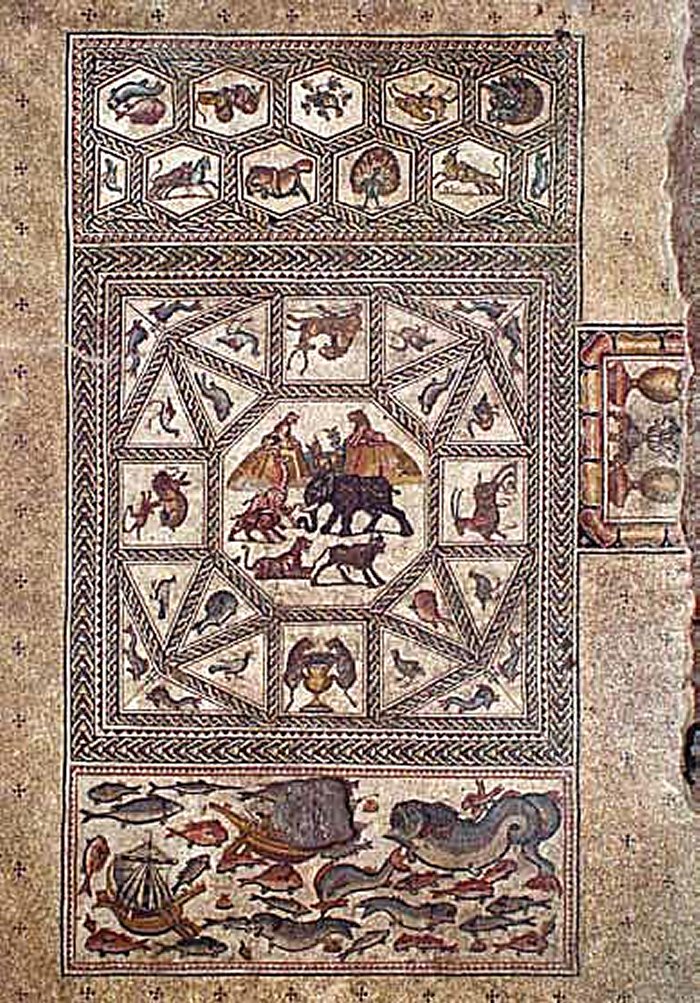Conny Waters – AncientPages.com -During a rescue excavation in 1996 in the town of Lod, one of the most impressive mosaic floors in Israel was discovered!

Image credit: Israel Antiquities Authority
The mosaic contains various stunningly naturalistic depictions of animals, birds, hunting scenes, and boats. Amidst all this beauty, one fascinating scene depicting the unusual sight of a damaged ship, captivated researchers’ special attention.
The mosaic floor, uncovered by the late Dr. Miriam Avissar of the Israel Antiquities Authority, was conserved by our conservation experts, and is currently on display at the Lod Mosaic Center (well worth a visit!).
The mosaic floor was the floor of a villa from the Roman period (late 3rd–early 4th centuries CE) and it consisted of two colorful carpets divided into several fascinating panels.

Image credit: Israel Antiquities Authority
In the southern panel, an interesting maritime scene is depicted, showing two Roman-period merchant ships sailing the deep sea, with an illustration of a whale (a whale-like sea monster known as Cetus in Greek mythology) rising open-mouthed, towards the ship in the center of the panel.
The scene is richly depicted with various sea creatures, including dolphins.
However, the scene was uncovered incomplete, as the ship in the middle of the mosaic was damaged in the Ottoman period by a cesspit that destroyed its center, the bow, and the main mast, hence it was called “The Damaged Ship.”

Image credit: Israel Antiquities Authority
Nonetheless, the preserved parts of the mosaic enabled researchers to propose a reconstruction of the depiction of this ship. Israel Antiquities Authority researcher, Dr. Elie Haddad, suggests that the artist intended to convey a specific message.
So, what was this message?
According to Dr. Haddad’s proposal, the ship must have encountered a dangerous situation at sea, in the course of which its main mast may have broken, leading to the danger of it sinking. The position of the damaged ship in the center of the panel indicates its significance and importance.

Image credit: Israel Antiquities Authority
“The artist wanted to depict the ship out at sea – otherwise he would have depicted the ship anchored near a port and close to the shore, as it is shown in other ancient world depictions,” says Dr. Haddad,
“We understand the scene on the mosaic floor essentially as an artistic expression of graтιтude, commemorating the moment when the ship emerged from danger and was saved.”
Do you want to see the mosaic for yourselves? Lod Mosaic – פסיפס לוד is open to the public, with special summer activities. You’re welcome to visit! See the website link in the comments.
Written by Conny Waters – AncientPages.com Staff Writer





